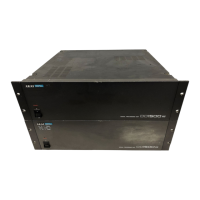HOW THE DD1500 WORKS - 3
Version 2.00 - March, 1996 Page 7
The following is a ‘flowchart’ of the DD1500.
INPUTS
TO PROJECT
TO 'RECORDINGS' LIBRARY
COPY EDITS TO LIBRARIES
MUSIC 1
DIALOGUE
(Analogue/Digital)
Audio is recorded through the inputs (analogue and/or digital) directly to tracks in the GRID
where they may be edited, slipped, synced, etc.. At the same time as recording them into
the GRID, the ‘raw’ recordings are normally placed in their entirety in a library where they
may subsequently be re-used in other projects. In the above example, they are being
placed in a library called ‘RECORDINGS’ so you always have access to these ‘raw’
recordings in the future. You may want to re-use them elsewhere but, also, by having
them in this library, you also have a ‘safety copy’ of the original recording to revert to in the
event of a mishap.

